Going out for a long road trip could be so much fun and adventurous. However, you need to make sure that your car is up for a long road trip. You can’t just plan a long trip one day and embark on a venture with your car. The last thing you’d want is to be stranded in the middle of nowhere because your car broke down.
A couple of things to check before going out on a long car trip are: inspecting for fluid leaks, checking the tires, the air filters, the battery, etc. Keep reading to know how to tell if your car can make a long trip.
Table of Contents
How to Know If Your Car can Make a Long Trip?
To determine if your car is suitable for a long trip, consider its age, maintenance history, and any known issues. It’s also a good idea to have it checked by a mechanic before embarking on a long journey.
How Old Is Too Old for The Cars?
When taking your car on a long road trip, you will want to feel confident that your car can complete the distance. Well, just because your car is old enough, that doesn’t mean that you can trust your car for a long drive. You can find many cars on the roads running for more than 20 years.
The primary thing that you should be concerned about with the old car is how well you have been maintaining your car. Are you changing the oil regularly? What is the frequency of the tuning up of the car? And more. These are some important questions you should consider before taking your old car on a long trip.
If your old car has been properly maintained and serviced, it should not develop more problems on a road trip. The crucial factor in keeping your old car on the road is adequate maintenance. You can check your car’s manuals to when and what maintenance tasks need to be done. As long as you have been servicing your car properly, you can take on a long drive.
Should You Be Concerned About Your Car Mileage?
Another important concern that most people have with their vehicles is the car’s mileage. Why? Mileage is considered an indicator of how long a car will last before requiring important repairs. And this is something very important to consider other than the age of your car.
Almost all the important components of your car, for example, transmission, engine, and more, have their running duration estimated by the mileage. On the other hand, other important parts, for example, timing belt, water pump and more also need to be changed after a particular mileage.
If you have a high mileage car and have done all the required services and repair, it will move fine on a long road trip. But you should consider that everything will break down at a certain point. So, even though you have had your car serviced, that will not guarantee that it can last for years. But there are certain things that you should check with your care before taking it on a long trip. Have a look at the below-mentioned points.
7 Things To Check For How To Know If Your Car Can Make A Long Trip
#1- Check If There Are Any Fluid Leaks
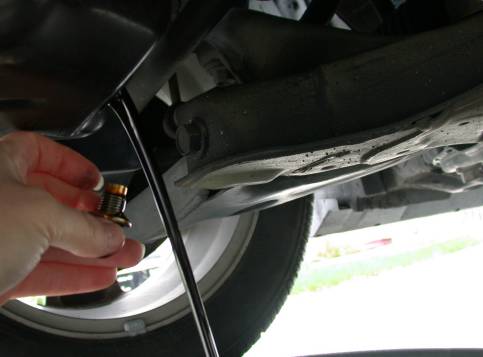
Driving with fluid leaks could be catastrophic! The leaking fluid could come in contact with other engine parts and lead to a disaster. So, make sure you check your car thoroughly for fluid leaks. It may go unnoticed for a long time and when you realize that there’s a leak, you may already have gone too far along the journey.
Oil
Well, you don’t need to hire a car expert to understand that oil is important for your car engine. Oil is the only thing that keeps different crucial moving components lubricated, for example, camshaft, crankshaft, and pistons. Oil helps these parts to function smoothly without creating any friction.
According to the expert, the recommended interval for oil changes is around every 3500 to 5500 miles. However, now the technology has improved, and most car companies now recommend their customers to change the oil every 8000 to 10000 miles. Before taking your car out on a long trip, properly check the manual for oil changes. If you recently changed the oil, check the oil condition using a dipstick.
Radiator Fluid
During a long trip, your car engine will create a lot of heat, and a well-functioning radiator can keep it cool for hours. Also known as antifreeze or coolant, the radiator fluid absorbs the heat from the engine and then dissipates the heat through the radiator. If the coolant level is low, driving a car for a few hours can lead to overheating issues. So, before beginning your journey, check the coolant and fill it off. The experts suggest flushing the radiator system after 40000 to 50000 miles to increase the engine’s lifespan.
Check The Brake Fluid
Whenever you push the car’s brake pedal, fluid moves inside the brake lines and makes the car’s brake pads put pressure on the rotors to slow down your car. You should always check the brake fluid before beginning your trip. If you experience a spongy pedal, there may be some air bubbles in the fluid lines of the fluid that has been contaminated. What you need to do here is you will have to remove the air bubbles from the lines. If necessary, add new fluid. It is recommended to change the brake fluid every 25,000 miles.
Power Steering Fluid
Most modern cars come with power steering so that you can make turns swiftly no matter what the current speed of your car. But sometimes, the car’s power steering fluid can get contaminated, and the steering may not respond properly. So, while planning a long trip, it will be better for you to check the condition and level of the fluid to avoid any unwanted issues during the trip. If your car has been covered a distance of 50,000 miles, then prefer to change the power steering fluid.
Windshield Fluid
Long trips will make the car filthy, and to enjoy a safe journey, you should keep the car’s windshield clean. After all, this way, you can see where you are heading in your car. So, make sure the windshield fluid level is good. Well, adding fluid to the windshield is very easy. You can get fluid from the local gas store and use a funnel to fill up the reservoir.
Transmission Fluid
A jury transmission can severely affect your long trip. A proper transmission fluid level will keep the gears performing smoothly, and insufficient or contaminated fluid can lead to uncomfortable shifts. Well, transmission fluid can last for months or years. But that doesn’t mean that you should ignore this. Check the car’s manual to know the recommended interval for the card. The interval may vary from 35,000 miles to 100,000 miles based on your car model. However, if you plan for a long trip and your car has crossed 60,000 miles, you prefer to change the transmission fluid.
#2- Is The Check Engine Light On?
Your engine check light could be on due to many reasons. It could be something minor like a faulty gas cap or something major like a troublesome engine. The last thing you want when on a long journey is your car misbehaving. So, you can’t let go of a lit check engine light and assume that it might be a minor problem.
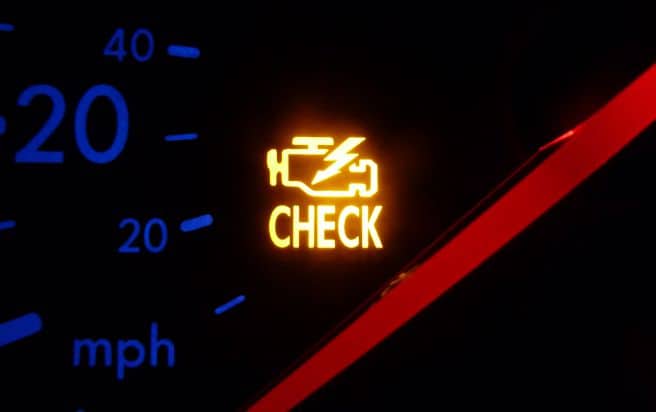
Figure out the real problem and fix it to ensure that you don’t get into any trouble while on the trip. Moreover, even minor issues can get enhanced when you have been driving with it for a long time. If the problem can’t be fixed before the journey, then you might want to reconsider taking the respective car on the trip for the sake of your safety.
Having a burnt-out blinker, headlight and taillight can cause serious issues during your long road trip. To make sure all the light bulbs are working properly, turn on the car and leave the car in parking mode. Now switch on all the headlights and check if the bulbs are burnt out or not. Check the right and left turn signals. You can press the brake pedal using a brick to know the brake lights’ condition.
#3- Check The Tires
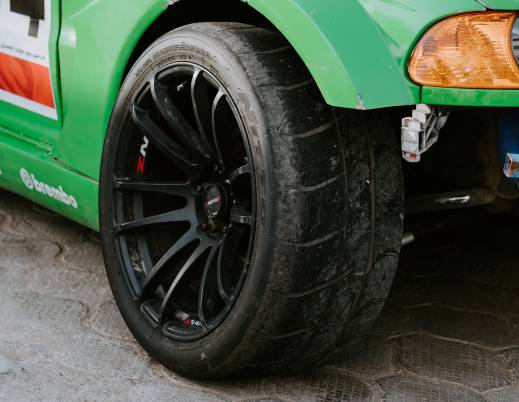
This should be a must-do item in your checklist before going out on a long trip. You can’t go out with flat tires, and you need to make sure that all your tires are at the appropriate pressure. If any of the tires have low pressure, it indicates that there could be a tire leak. Going on a long trip with leaky tires can be dangerous. Such tires are quite vulnerable to blowouts. Moreover, do check the spare tire as well before embarking on a long journey. You could also take a tire inflator along with you on the trip to be safe.
Air Pressure
All the long road trippers need good mileage as they don’t like to see signs that say, “next gas 150 miles”. If you are one of them, then you should keep in mind that underinflated tires can make your car consume more gas. On the other hand, if the tires are overinflated, then ride quality will be poor.
Furthermore, wrong air pressure will make the tires function unevenly, lowering the lifespan of the tires. By checking the car manual, you know how much air your tires need. Don’t forget to check the pressure level before you leave, and you should keep checking that after every 1000 miles. If the outside temperature is hot, you should check the tires more frequently.
Rotation
Well, the pressure level in tires may be correct, but remember that changes in weight balance, suspension calibration, road condition, and driving habits can make the tires degrade at different rates. That’s why car makers always suggest rotating the tires between various locations. You can rotate the tires from rear to front or left to right to make them last longer. It is advisable to rotate the tires every 6000 to 8000 miles.
Replacement Of Tires
If you think the tires are really in bad condition, check whether you should replace them now. For this, you can try the penny test. You can do that by sticking a coin in the tire groove with the logo facing into the groove. If you see the logo (head of Abraham Lincoln), it’s time to do a tire replacement. Even though it is close, it is still recommended to replace them before starting your long trip. Based on the use and type, some tires can last 30000 to 50000 miles. If damages like tire bulges, exposed cord, or punctures happen, replace the tires first, then start your journey.
#4- Do You Maintain Your Car Regularly?
Your car must get your car maintained and checked regularly. In general, regular maintenance for most cars should be done every 5000 miles. This is necessary to keep your car running smoothly. A maintenance session incorporates a lot of important procedures that are required for the upkeep of the car. For example, an oil change, tire replacement, etc. If your car hasn’t been maintained in the last 6 months, then it could be risky to take it out on a long trip.
Don’t Forget to Check the Brake Pads
Brake pads in the cars offer the required friction to slow down and stop the car. However, with regular use, they will wear out. And after some months, they may become very thick and will not work properly. When there is no sufficient pad material left in your car, you will notice irritating squealing or screeching sounds from the brake pads unit. That means it’s time to replace the brake pads to fix the noise and make your long road trip safer. Based on the materials used in the brake pads and how you are using them, they can last around 30000 miles to 80000 miles.
Belt And Hoses
Looking under the car hood can be confusing and tricky, but there are some signs of issues that all can spot. For example, you can press the belts to check if their condition is good or not. Make sure that they are a little slack. If the car belt has teeth, then make sure that they don’t come loose while pushing the belt.
If the belt has a damaged tooth, don’t drive the car. It is advisable to replace the belt as soon as possible. On the other hand, you need to check the hoses for fluid leaks. Check the end of the hoses properly for this. If the hose or belt stops working in the middle of the ride, it can damage the engine.
Well, every car can have some problem. But it is not as bad as having your long trip ruined by a car with preventable issues. As your car will work hard and go through more stress during a long trip, you need to provide your car with everything to keep it running properly.
#5- Check The Air Filters
If you venture out on a long road trip with dirty filters, you will be preventing your engine from getting fresh air. This will be very bad for your engine in the long run. Moreover, your fuel economy will also pay the price along with your respiratory system.
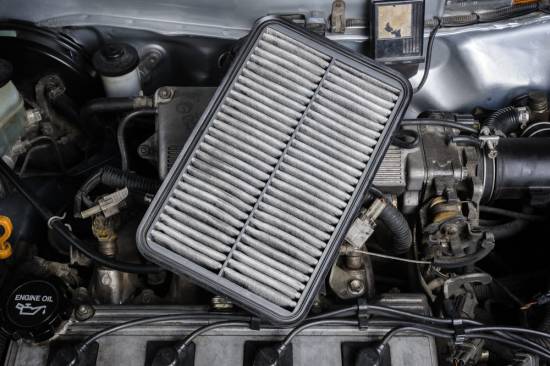
Perform a proper inspection of your car’s air filters, and replace the air filters if the need arises.
We recommend using washable and reusable air filters for added longevity and efficient filtration. Also, don’t miss out on cleaning the cabin air filter of your car. It can smell funny and can disrupt the proper functioning of your AC system when too dirty.
You all know that a road is a dirty place, and your car uses pre-equipped air filters to prevent the debris, bugs, and dust from entering and affecting the engine as well as the interior. But with time, the filters will reach their capacity and get clogged. This can severely affect your car’s engine performance; air quality and fuel economy will also decrease. So, it is advisable to replace the air filter once a year or at every 10000 to 20000 miles. On the other hand, the cabin filters should be replaced between 13000 to 16000 miles. The best thing is that these parts are inexpensive.
#6- Check The Battery Date
Suppose you are out on a long trip and all of a sudden your battery dies. A healthy battery can also die if exposed to extreme conditions like cold or summer heat. So, make sure that you get the car battery checked if it is over 3 years old. Also, as a preventive measure get a new spare unit to avoid delaying the trip. Don’t overlook this point and do not go out on a trip with a car that has battery issues. Here’s how you can check your car battery on your own:
Keep in mind that after about a couple of years of usage, most batteries lose the ability to work and will often give warning signals. Don’t ignore these signs and check the date on top of your battery. Check its charging ability too before deciding whether to take it out for a long trip or not.
#7- Check The Oil And The Coolant
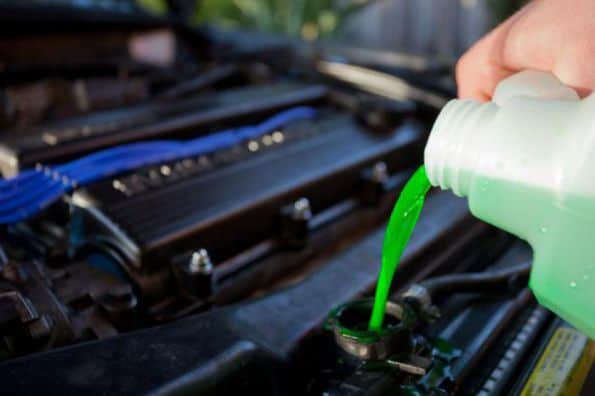
Don’t forget to check your car’s oil level and the last date you had an oil change for the car. Moreover, other fluids of the car like coolant and brake fluids should also be topped off to stay clear of unnecessary breakdowns.
It’s Time to Tidy Up
As you will spend a long time in your car while on a long road trip, you should make sure that the car looks and feels pleasant to make your ride comfortable. Here are some tips to keep in mind.
Properly Clean Inside and Out
No one would like to go on a long or short road trip in a smelly or grimy car. So, before you can set off for the trip, you should clean the car’s interior. Here, you should pay close attention to the things that come into contact with, for instance, dashboard controls, storage areas, floor mats, and seats.
On the other hand, you need to ensure that your car’s trunk is clean and will not damage your bags or other items during the trip. Furthermore, wash the exterior properly before you begin your journey. Bird poop and bugs can damage the paint, and you will face many of those during the trip. So, clean the exterior frequently during the journey.
Organize All the Things
One of the most irritating feelings on a trip is getting lost in a disorganized mess where you may not find the things when you need them. To avoid such issues, properly organize your car’s interior before you leave your place. What should you do? Ensure that the frequently used areas, like cupholders, etc., are good. Don’t forget to carry power adapters and cords to charge your phone, Bluetooth headsets, etc. Check whether the navigation system is working properly or not. And most importantly, carry all the important papers related to your car.
Some Additional Things to Keep in Mind
If you think your car is all set to be taken on a long trip, then you should plan for the trip as soon as possible. While planning, don’t forget to collect the required road trip safety supplies. For example, a jack, a spare tire, gloves, tools, flashlights, and more. What’s more? You need to plan the route to avoid any last moment confusion. There are some places without any phone service. So, you should always have a backup, like a physical map.
Driving dehydrates your body. So, during your trip, drinking water will keep you alert, and you will feel good. So, bring lots of water with you. You can also get a small cooler or car refrigerator for your snacks and drinks.
If you are driving alone, you should never hesitate to sing your heart out. Listening to your favorite music will take you to a new world while driving on an open road. Playing some offbeat songs can help you remain engaged and alert during the trip.
Every driver is different regarding how many hours they can drive continuously. While some may drive for more than 6 hours, some can only go for a few hours. So, you should understand your driving duration limit and plan for your stops accordingly. You can prefer to stay at an affordable hotel.
Final Checklist Before Leaving For The Trip Including Covid-19 Essentials
- Check the condition of tires.
- Check the pressure properly.
- Don’t forget to add coolant if the level is low.
- Horn and fuses.
- Brake fluid, power steering and oil.
- Carry a mask.
- Always have some disposable gloves
- Hand sanitizer is a must.
- Carry Clorox wipes.
- Medicines for cold and fever.
- Your proof of vaccination if you are traveling to a new state.
FAQs
How often should you let your car rest on a road trip?
You should build a practice of stopping after every 2 hours for 15 minutes or more. Even if your car is well maintained and has been repaired recently, allowing it to rest for some time is a safe practice to follow.
However, breaking from the roads is quite crucial for your safety, level of alertness, and health. If you are driving for hours, you should take a break after a few hours, around 2 to 3 hours, to stretch your legs. Besides, you should also keep an eye on the tire’s engine and check the fluid. Your car can overheat during a long journey if the coolant is functioning a little slower or any malfunction.
Well, this is something very rare in modern vehicles. On the other hand, hot weather conditions can also contribute. Allow the card to cool before opening the fluid tanks to the hood, and this way, you can prevent possible injuries and burns. It is advisable to let your car cool for at least 30 minutes during a long trip. Some other things to consider are:
- Check the tire pressure frequently
- Keep fuel filled up.
- Don’t forget to stretch your legs.
Most importantly, keep yourself hydrated.
Can old cars make long trips?
If your car is in good and working condition and has been passed in the latest state inspection, then there shouldn’t be a problem taking it out for an extended drive.
Do long trips hurt cars?
Every car that hits the road undergoes some amount of wear and tear. So, long trips can cause damage to your car even if you don’t notice it right away. Moreover, if something goes wrong in the journey and your car has a breakdown midway, trying to fix it yourself may worsen problems. You should always get your car maintained after an extended trip.
Final Words
One of the most irresponsible things to do on a long trip is going out without proper planning. With proper precautions and preparation, you will be all set to get the best out of your long road trip. Under no condition, you should take the risk of going out in a car that has pre-existing issues and severe problems like engine, pressure, battery faults, etc. The above article pretty much covers all the things that need to be checked before taking your car for a trip. Other things you should check are the headlights and the brake lights. If you think your car is unsafe and unreliable, you should rent a card for your long road trips to keep it comfortable and safe.
